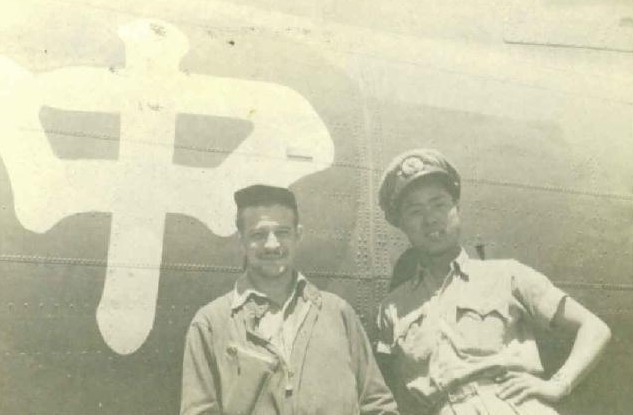BEIJING: In March this year, 70-year-old Eve Coulson made the 4,700-km journey from New Jersey to California to visit her 109-year-old Chinese-born “uncle” Moon Fun Chin. As far as she knows, Chin is one of the few surviving pilots in the U.S. who flew “the Hump,” a trans-Himalayan air route for delivering supplies to China to fight against the Japanese invaders during World War II (WWII).
Another survivor is Peter J. Goutiere, who turned 108 on September 28 this year. He, along with Chin and Coulson’s father, Ursel Elbert Coulson, were pilots for the China National Aviation Corporation (CNAC). Coulson Sr., who flew 99 Hump trips, worked closely with Goutiere in China in the early 1940s. CNAC was a Sino-U.S joint venture established in 1929. Most of its pilots were foreigners and the majority of its co-pilots and radio operators were Chinese.
Japanese troops invaded the northeastern region of China on September 18, 1931, and launched a full-scale invasion of China in July 1937. By 1940, the Japanese had taken control of almost all harbors along China’s coastline, leaving the Burma Road which linked the Yunnan Provincial capital, Kunming, with Lashio in neighboring Burma (now Myanmar), as the only practical route for international supplies into China. At that time, Burma was a British colony.
On December 7, 1941, Japan attacked Pearl Harbor, triggering the outbreak of the Pacific War. China entered the Anti-Fascist Alliance on January 1, 1942 and teamed up with the U.S. and the UK to fight against their common enemies in the China Burma India Theater.
Initially, military and other supplies from the U.S. were first transported to India and then
delivered to China via the Burma Road. However, after Burma’s submission to the Japanese in May 1942, the road was closed, leaving China’s war of resistance entirely cut off from international supplies.
To support China in the war against Japan, the India-China Division of the Air Transport Command (ATC) of the U.S. Army and the CNAC worked together to airlift the supplies from Assam in India to Yunnan and Sichuan provinces in southwest China.
When the pilots crossed the southern section of Himalayas, the Gaoligong Mountains and Hengduan Mountains, with a height between 4,500 and 5,500 meters, the peaks looked to them like the humps of a camel. It is from this resemblance that the air route came to be known as the Hump. It was the military supply lifeline for China from 1942 to 1945.
–The Daily Mail-Beijing review news exchange item




